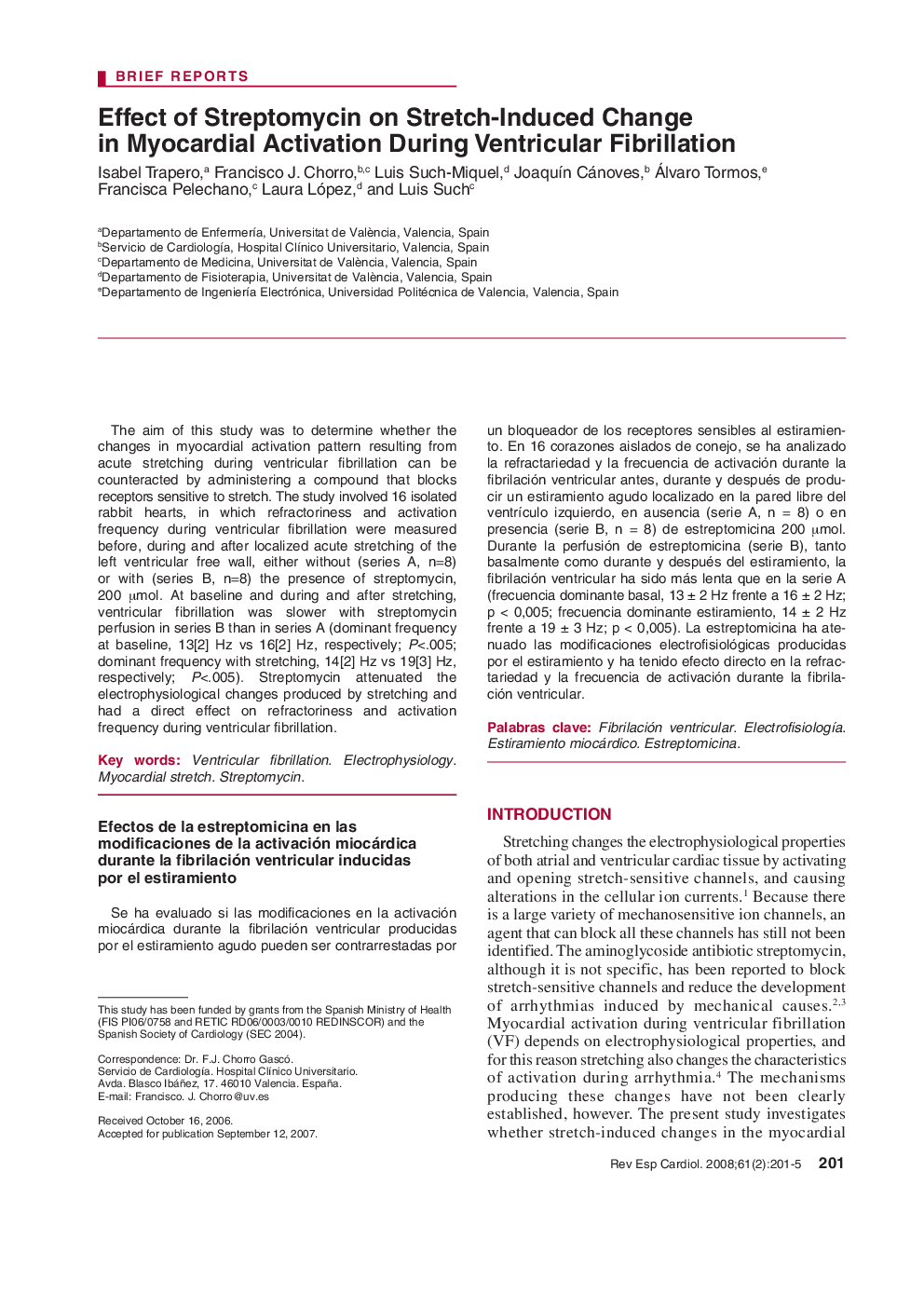| Article ID | Journal | Published Year | Pages | File Type |
|---|---|---|---|---|
| 3018968 | Revista Española de Cardiología (English Edition) | 2008 | 5 Pages |
The aim of this study was to determine whether the changes in myocardial activation pattern resulting from acute stretching during ventricular fibrillation can be counteracted by administering a compound that blocks receptors sensitive to stretch. The study involved 16 isolated rabbit hearts, in which refractoriness and activation frequency during ventricular fibrillation were measured before, during and after localized acute stretching of the left ventricular free wall, either without (series A, n=8) or with (series B, n=8) the presence of streptomycin, 200 µmol. At baseline and during and after stretching, ventricular fibrillation was slower with streptomycin perfusion in series B than in series A (dominant frequency at baseline, 13[2] Hz vs 16[2] Hz, respectively; P<.005; dominant frequency with stretching, 14[2] Hz vs 19[3] Hz, respectively; P<.005). Streptomycin attenuated the electrophysiological changes produced by stretching and had a direct effect on refractoriness and activation frequency during ventricular fibrillation.
Se ha evaluado si las modificaciones en la activación miocárdica durante la fibrilación ventricular producidas por el estiramiento agudo pueden ser contrarrestadas porun bloqueador de los receptores sensibles al estiramien-to. En 16 corazones aislados de conejo, se ha analizado la refractariedad y la frecuencia de activación durante la fibrilación ventricular antes, durante y después de produ-cir un estiramiento agudo localizado en la pared libre del ventrículo izquierdo, en ausencia (serie A, n = 8) o en presencia (serie B, n = 8) de estreptomicina 200 µmol. Durante la perfusión de estreptomicina (serie B), tanto basalmente como durante y después del estiramiento, la fibrilación ventricular ha sido más lenta que en la serie A (frecuencia dominante basal, 13 ± 2 Hz frente a 16 ± 2 Hz; p < 0,005; frecuencia dominante estiramiento, 14 ± 2 Hz frente a 19 ± 3 Hz; p < 0,005). La estreptomicina ha ate-nuado las modificaciones electrofisiológicas producidas por el estiramiento y ha tenido efecto directo en la refrac-tariedad y la frecuencia de activación durante la fibrila-ción ventricular.
